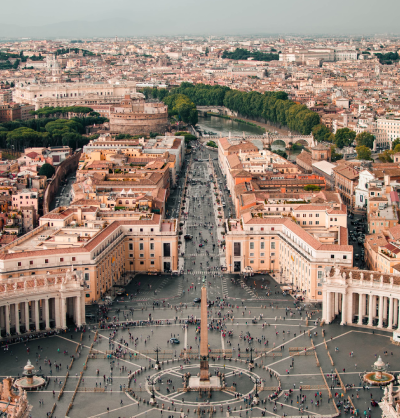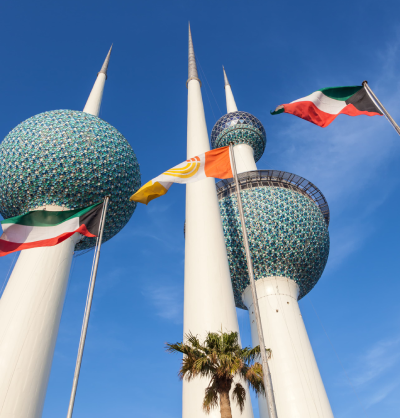Influencers in the Gulf rack up views, collect subscribers and generate advertising revenue much like they do everywhere else. Operating in the region’s online commercial spaces has become lucrative – for example, Saudi Arabia now ranks 17th in the world for rates of internet usage. 94.3% of the GCC’s 58.6 million population are internet users, and with 78% social media users this means that 83% of the GCC’s internet users (55.3 million people) engage on social media.[i] Between 2019 and 2020 the Gulf continued to amass new internet and social media users with Bahrain registering 72,000 social media newcomers, Kuwait 155,000, Qatar 68,000, Saudi Arabia 2 million and the United Arab Emirates (UAE) 577,000, bringing the total number of social media users in the Gulf to 46 million.[ii] The only exception was Oman, which did not register any new social media users and continues to have the lowest social media penetration gap in the GCC (around 50%).[iii] With the COVID-19 pandemic, the importance of the online world and its personalities has continued to grow. The Gulf states’ internet penetration across social media channels has begun to outstrip Western states (per capita).[iv] The consumption of online content in the Gulf and societal attitudes towards this online content has begun to present new opportunities for influencers, businesses, and ruling institutions alike.
These opportunities often come in their usual commercial packaging. For example, influencers like fashion ambassadors Haneen Al Safaify from Qatar and Dana Al Tuwarish from Kuwait have generated massive followings as more and more women come online in the Gulf, and they use their platforms to advertise the Gulf as a region of success and prosperity.[v] But this commercial opportunity is not just for influencers. Gulf states also want to advertise themselves as open for business and tourism, and influencers play a key role in this messaging. This welcoming message to the world was, initially, personified by the celebrity Ahmad Mazin Alshugairi, who burst to stardom through his hit-TV-show Khawatir, which ran from 2005 to 2010 and promoted Saudi Arabia as a new commercial hub in the Gulf.[vi] Today, Alshugairi is back presenting Seen, a new programme that advertises the successes of the past, while calling on Saudi citizens to move together into the future.
Despite a sabbatical from television, Alshugairi remains relevant and well-suited to present a pan-Gulf message precisely because he has developed of a dedicated and interactive social-media following. By remodelling in the mould of an influencer, Alshugairi has far greater outreach than ever before with over 18 million followers on Twitter, and nearly 14 million on Instagram.[vii] In Seen the influencer role takes on a new form – Alshugairi no longer operates simply as a commercial advertiser covering an extended brief of science and technological investment, he also works to promote national cohesion in line with Saudi Arabia’s Vision 2030. [viii]
It is not just in perspicuous cases like Alshugairi that Gulf states work with influencers. Across social-media channels, influencer content in the Gulf is diffused with pro-government messages. Take the case of influencers who ostensibly deal solely in the promotion of clothing and expensive hotels. For instance, Rania Ibrahem, a lifestyle influencer from Qatar, intersperses her commercial posts with those demonstrating admiration and support for the monarch of Qatar, Tamim bin Hamad Al Thani, and his predecessor, Hamad bin Khalifa Al Thani.[ix] Like influencers everywhere, Ibrahem represents her own interests; but unlike influencers everywhere, she — like many other influencers in the region — does so in support of their national governments.
This points to a qualitative difference between the content produced by influencers in the Gulf and, for instance, those in the US and Europe. In recent years, influencers and ruling institutions in the Gulf have seen their interests intertwine and lean on one another. There are some particularly telling examples. Take the case of Mo and his channel ‘Movlogs’. In a video released back in 2019, Mo visits the royal family of Dubai, and experiences first-hand luxury, good hospitality, and pet tigers and lions owned by the nephew of the current ruler of Dubai.[x] The influencer benefits from royal access, and the royal family benefits from the positive messaging offered by the influencer – introducing old dynasties to a young generation. Each symbiotically uses the other in generating a subtle nationalistic message via YouTube personalities. In addition to his 3.8 million followers on Instagram, Movlogs’s Youtube Channel has 4.1 million subscribers. This makes Movlogs one of the biggest influencers in the UAE, and Mo engages with his young audience by assuming a youthful persona and the shaky-cam aesthetic that is common to so many successful YouTube stars.
This blossoming relationship between governing institutions and online influencers is unlike anything in the West and the implications of this relationship will be significant because of the importance of ‘word-of-mouth’ in the Gulf which makes influencers ideally placed to shape cultural attitudes and social discourse. A recent study concerning the flow of misinformation during COVID-19 offers insights into online behaviour of Saudi Arabian population, which is ‘more likely to judge the validity of information based on their own experience, and deem it beneficial for the public to share COVID-19 related information [without evidence].’[xi] Although not predictive of how likely citizens of Gulf states are to recirculate misinformation — Saudi Arabia actually comes in below the world average for the recirculation of online COVID-related information — these findings suggest a break from patterns observed in the West where people with higher levels of education are less likely to recirculate information. In Saudi Arabia, for example, people with higher levels of education are actually more likely to do so, which provides the Gulf with a unique opportunity to move culture and shape society through their influencers.[xii]
Perhaps the best example of this mutually constitutive relationship between influencers and governing institutions can be seen in the case of Omar Farooq.[xiii] Broadcasting to his millions of followers, Farooq’s videos include such sponsors as the Bahraini eGovernment app store. For example, ‘Tawasul’, an app which grants access to Bahrain’s ‘National Suggestion & Complaint system’, features in a video entitled ‘Defending Homeless’ from 2018. In this video, Farooq takes a group of children to the USA to do charity work.[xiv] This is done with the charity ‘Mobader’, a Saudi Arabian medical charity. The premise? – that this is the first time these children will see poverty and homelessness, but that they can learn from this to help those less fortunate than themselves. Influencers in the Gulf not only support their nations at home, therefore, but also present a pan-Gulf attitude that engages in the wider world in such a way that many in the West would regard as ’voluntourism’ even though its intention is to help.
The Gulf has seen a sharp rise in the intensive use of social media platforms such as Youtube, Facebook, and Twitter.[xv] Gulf states are taking proactive steps to seize this as an opportunity for their respective societies. The internet and its influencers might be more naturally thought of as posing a challenge to the ruling institutions in the Gulf. However, the influencer culture provides an opportunity to promote patriotic and pan-Gulf messaging as much as to brand a country to attract tourists and showcase the countries’ history and heritage, while simultaneously offering a peak into the daily lives of the GCC population that has in many places begun to open up to the rest of the world. Influencers also have the unique opportunity to use their platforms to help promote and implement wider national development goals that require behavioural change, such as issues linked to environment and sustainability or obesity and healthy lifestyle. Such a message could be more effective coming from a favourite social media personality, who shows how to implement the changes in real life, rather than a government memo, particularly when communicating to the growing younger generation.
Resources
- Author’s calculations based on data from https://datareportal.com and https://data.worldbank.org/
- Simon Kemp, ‘Digital 2020: Saudi Arabia,’ Datareportal, 2020, https://datareportal.com/reports/digital-2020-saudi-arabia; Simon Kemp, ‘Digital 2020: Bahrain,’ Datareportal, 2020, https://datareportal.com/reports/digital-2020-bahrain; Simon Kemp, ‘Digital 2020: Qatar,’ Datareportal, 2020 ,https://datareportal.com/reports/digital-2020-qatar; Simon Kemp, ‘Digital 2020: Kuwait,’ Datareportal, 2020, https://datareportal.com/reports/digital-2020-kuwait; Simon Kemp, ‘Digital 2020: United Arab Emirates,’ Datareportal, 2020, https://datareportal.com/reports/digital-2020-united-arab-emirates
- Simon Kemp, ‘Digital 2020: Oman,’ Datareportal, 2020, https://datareportal.com/reports/digital-2020-oman?rq=oman
- The GCC countries’ figures compared to Datareportal data for France, Germany, Italy, UK and US: Simon Kemp, ‘Digital 2020: France,’ Datareportal, 2020, https://datareportal.com/reports/digital-2020-france; ‘Digital 2020: Germany,’ Datareportal, 2020, https://datareportal.com/reports/digital-2020-germany; ‘Digital 2020: Italy,’ Datareportal, 2020, https://datareportal.com/reports/digital-2020-italy; ‘Digital 2020: United Kingdom,’ Datareportal, 2020, https://datareportal.com/reports/digital-2020-united-kingdom; ‘Digital 2020: United States,’ Datareportal, 2020, https://datareportal.com/reports/digital-2020-united-states-of-america
- Haneen Alsaify, Instagram,https://www.instagram.com/haneenalsaify/; Dana Al Tuwarish, Instagram, https://www.instagram.com/daneeda_t/
- Robert F. Worth, ‘Preaching Moderate Islam and Becoming a TV Star,’ The New York Times, 2 January 2009, https://www.nytimes.com/2009/01/03/world/middleeast/03preacher.html?_r=1&pagewanted=all
- Ahmad Mazin Alshugairi, Twitter, https://twitter.com/shugairi; Ahmad Mazin Alshugairi, Instagram, https://www.instagram.com/ahmadalshugairi/
- Saeed Saeed, ’Ramadan 2021: Ahmad Al Shugairi’s new show ‘Seen’ charts Saudi Arabia’s rapid transformation,’ The National, 18 April 2021, https://www.thenationalnews.com/arts-culture/television/ramadan-2021-ahmad-al-shugairi-s-new-show-seen-charts-saudi-arabia-s-rapid-transformation-1.1204719
- Rania Ibrahem, Instagram post, 17 May 2019, https://www.instagram.com/p/BxkKoT7gtJA/; Instagram post, 18 December 2019, https://www.instagram.com/p/B6Nj2i8AsHZ/; Instagram post, 25 February 2020, https://www.instagram.com/p/B8-9sqkgiC6/
- Mo Vlogs, ‘Visiting the Royal Family of Dubai !!!,’ YouTube, 28 March 2019, https://www.youtube.com/watch?v=zUbZk6Gf-JA&ab_channel=MoVlogs
- Maram Alshareef and Amna Alotiby, ‘Prevalence and Perception Among Saudi Arabian Population About Resharing of Information on Social Media Regarding Natural Remedies as Protective Measures Against COVID-19,’ 1 September 2021, International Journal of General Medicine, Volume 14, p. 5134, https://doi.org/10.2147/IJGM.S326767
- Ibid.
- Omar Farook’s profile on Those Who Inspire, https://www.thosewhoinspire.com/meet-the-ip/omar-farooq/
- Omar Farooq, ‘Defending Homeless #OmarTries,’ YouTube, 5 September 2018, https://www.youtube.com/watch?v=MmsqYm4AEgk
- Sulaiman Reyaee and Aquil Ahmed,‘Growth Pattern of Social Media Usage in Arab Gulf States: An Analytical Study,’ Social Networking, Volume 3, pp. 23-32, 10.4236/sn.2015.42003








